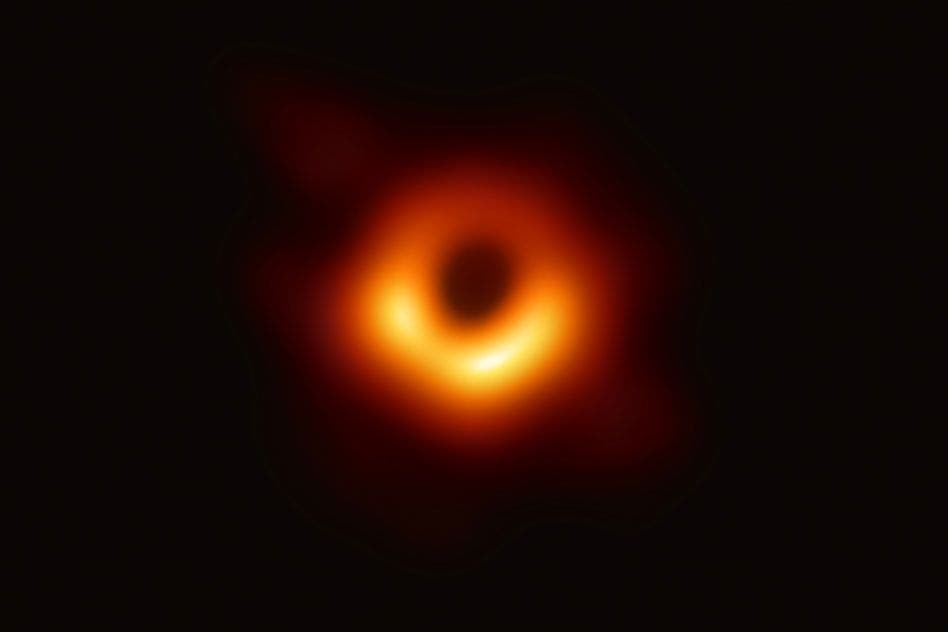
EHT Collaboration
On Wednesday, a huge collaboration of international scientists made a historic announcement: they have captured the first picture of a black hole. The image was constructed from data gathered by observatories all over the globe, which were combined to create a virtual telescope as big as the Earth.
“We have seen what we thought was unseeable,” said Sheperd Doeleman, an astronomer at Harvard University and the Harvard-Smithsonian Center for Astrophysics, who directed the project behind the black hole image. “We’ve exposed a part of our universe we’ve never seen before,” he added during a press conference at the National Press Club in Washington, D.C.
The Eye of Sauron
The picture shows a dark circle surrounded by swirling, bright features, all eerily similar to the Eye of Sauron from the Lord of the Rings. What we’re seeing is actually the event horizon of the supermassive black hole that sits at the very center of a distant galaxy known as Messier 87, about 53.5 million light-years away, in the constellation Virgo. This means that the picture of the black hole we’re seeing now is what it used to look like exactly 53.5 million years ago — the time it took for its light to reach us. Researchers also made observations of another supermassive black hole, the one at the center of the Milky Way, Sagittarius A*, located only 26,000 light-years away.
The epic picture was produced over the course of many years by a collaboration of more than 200 scientists known as the Event Horizon Telescope (EHT) project.
Black holes are the dark remnants of collapsed stars whose gravity is so intense that nothing, not even light, can escape. Because light cannot escape the gravitational pull of a black hole, it is virtually impossible to image or photograph one. However, matter and energy aggregate around the edge of a black hole, a ring-shaped feature known as the event horizon — and this can be imaged because some light manages to escape and reach us.
But it wasn’t easy. For instance, the Sagittarius A* event horizon “is so small that it’s the equivalent of seeing an orange on the moon or being able to read the newspaper in Los Angeles while you’re sitting in New York City,” Doeleman said during the SXSW event last month.
In order to image an object as small as Sagittarius A*, you need a really big telescope. In this case, the researchers turned the whole planet into a huge telescope by combining data from eight radio telescopes located all around the world. Using a technique called Very Long Baseline Interferometry, or VLBI, the instruments of all these observatories located thousands of miles from one another were linked to form a “virtual telescope”, whose resolving power is as big as the space between the disparate dishes.

More than 100 years ago, Einstein’s equations predicted exactly what the size and shape of a black hole’s shadow would be. Researchers have also designed computer simulations and models that compute the shape of a black hole’s event horizon, which can be tested with the actual physical observation. With this most recent observation of M87, researchers said that the findings are consistent with the predictions of general relativity — this was perhaps the hardest test of general relativity yet.
The observations also shine new light about the behavior of black holes, such as how gas spirals down into a black hole singularity. The technique used to image the black hole can also be used to determine the shape of an event horizon, thus revealing whether a black hole is spinning. Perhaps most importantly, we now know that something that sounds so esoteric as an event horizon is definitely real.
The EHT researchers produced four images so far, offering the first intimate look inside one of the most mysterious objects in the universe. But these were just the first picture and those to come later will surely be better and sharper. Today marks a historical day when a whole new world might open up to us.


